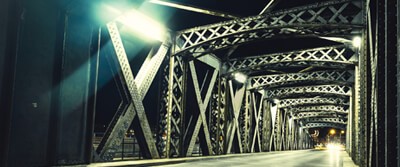Bone-Inspired Steel Less Likely to Crack

By Kevin Ritchart
Steel is a symbol of strength. From the bridges that span our waterways to the buildings that dot the skylines of our cities to the nickname of one of DC Comics’ most iconic superheroes, steel has quite a reputation.
But in reality, the internal makeup of steel is prone to cracking under repeated stress. That’s why scientists and metallurgists are working together to develop a new type of steel with an internal structure that mimics the design of bones.
Strength Comes from Within
While bones are extremely light in weight, they don’t crack easily because of their lattice-like internal structure. Bones are made up of tiny collagen fibers that are oriented in many different directions. This creates several different patterns and connections inside the bone that make it resistant to cracking under stress.
Currently, the internal makeup of the steel used to build our bridges, skyscrapers and even spacecraft is linear in nature, which makes the accumulation of even the smallest cracks a danger to the stability of the overall structure.
The bone-inspired steel would be constructed using overlapping layers of varying levels of hardness, which increases the overall strength and reduces the chances of small cracks escalating into a catastrophic fracture.
Making steel in this bone-like manner can even result in roadblocks for any small inner cracks that may form — essentially “healing” it from sustaining further damage like its more traditional counterpart.
Barriers to Development
While this new steel is projected to be stronger than what’s used today to form the infrastructure of massive bridges and buildings, there’s no way for scientists to safely test it in a real-world environment. The risk of building a bridge, for example, out of the bone-like steel and subjecting it to public use — even for a limited period of time — would be too great.
Bone-inspired steel would be more expensive to produce than traditional steel, but if it performs as predicted, it would save money in the long run because it wouldn’t have to be replaced as often. This approach to construction could lead scientists and engineers in other fields to use the structure of bones to strengthen the makeup of other materials as well.
It’s doubtful that this new approach to steel-making is going to result in anyone tossing aside Superman’s usual nickname in favor of “The Man of Bone,” but the tall buildings he leaps in a single bound could someday be built a bit differently.
Discussion Questions
- What are some other large structures that could benefit from being constructed of materials with a bone-like interior?
- Is there a material other than steel that could be used to build bridges and skyscrapers?
- Metallurgist
- lattice
- infrastructure